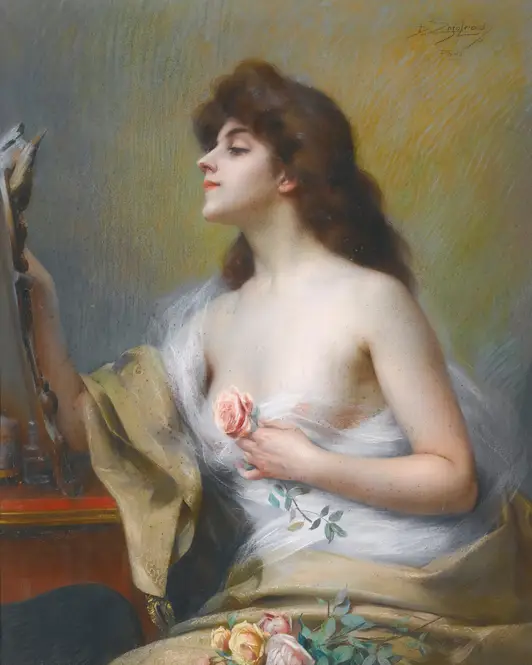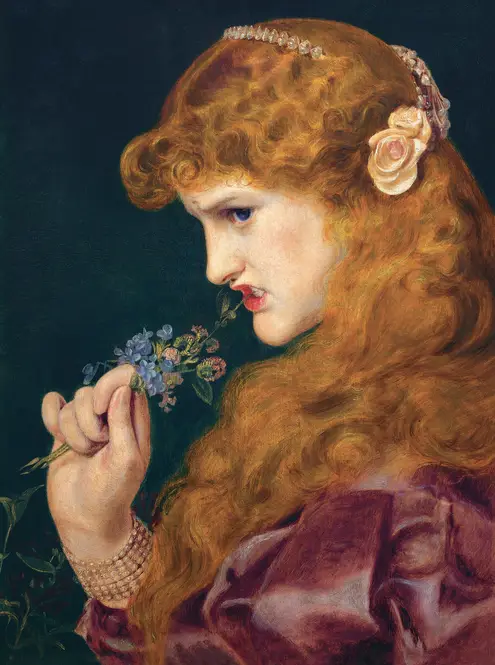-
-full.webp)
Pea Blossoms (1890)
A luminous study of delicate pea blossoms, balancing realism with dreamlike softness, evoking themes of fleeting beauty.
-
-full.webp)
Träume II (1912)
A dreamlike composition where soft forms and muted tones evoke a world between reality and imagination.
-
-full.webp)
Female Figure (1894)
A contemplative woman emerges from soft brushstrokes, her presence both vivid and vanishing into the muted surroundings.
-
-full.webp)
Lady Lilith (1867)
A mesmerizing portrait of Lilith, lost in her reflection amid wild roses and untamed beauty.
-
-full.webp)
Néméa (1894)
A hauntingly beautiful figure emerges from misty hues, blending myth and quiet introspection with delicate brushwork.
-
-full.webp)
The Rose Of All Roses (1889)
A solitary rose, radiant and meticulously detailed, seems to emerge from darkness, embodying both fragility and timeless beauty.
-

Girl with a rose
A young girl holds a rose close, her expression caught between vulnerability and quiet strength.
-
-full.webp)
Jardin sous la neige (1909)
A snow-laden garden rendered with poetic stillness, where winter’s hush becomes a canvas for light and longing.
-

Love’s Shadow
A mesmerizing portrait of longing and mystery, where light and shadow dance around a figure steeped in emotion.